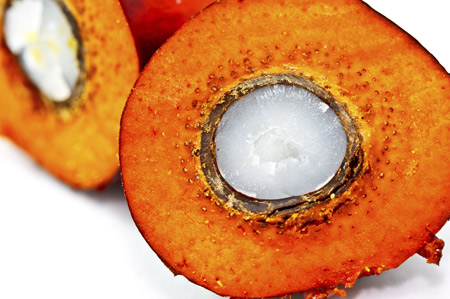Malaysian palm oil output hits 4-year low – but so do exports
Category: Oilseeds
 (Agrimoney) – Concerns over Malaysian palm oil exports injected caution into the market for the vegetable oil even after data showing a bigger-than-expected drop in production to a four-year low.
(Agrimoney) – Concerns over Malaysian palm oil exports injected caution into the market for the vegetable oil even after data showing a bigger-than-expected drop in production to a four-year low.
Malaysia produced 1.16m tonnes of palm oil last month – down 15.0% month on month and the lowest figure since February 2015, data from the Malaysia Palm Oil Board showed.
The drop in output to a level 23% below that in January last year reflected the hangover from December’s inundations in Malaysia, the second-ranked palm oil producer, and exporter, at a time of year when palm fruit harvest volumes are seasonally low.
“Production was impacted, as expected, by cyclical lower levels of production, lagged yield effects from extreme dryness in the first quarter of 2014 and the late-December flooding in East Malaysia,” said VSA Capital analyst Edward Hugo.
At Malaysia-based JF Apex Securities, Jessica Low Jze Tieng said that output in Sabah, down 18% month on month and Sarawak, down 22%, fell “as floods hit the states.
In peninsular Malaysia, the top growing area, production “remained adversely impacted by the aftermath of the severe monsoon flooding in east coast of Peninsular Malaysia as milling, processing facilities, and transportation were in the midst of being repaired”, Ms Low said.
Exports tumble
The fall in output was bigger than the 13.0% drop expected by analysts.
However, Malaysia’s palm inventories, while falling 12.2% month on month to 1.77m tonnes, met market expectations nonetheless, thanks to weaker-than-forecast exports.
Shipments last month tumbled by 22% to 1.18m tonnes – also the lowest since February 2011 – compared with a market forecast of a 1.29m-tonne figure.
It was also, by a distance, the largest month-on-month decline in exports, on records going back to 2010.
Ms Low, terming the shipments “lacklustre”, said that they were “due to cold weather in the northern hemisphere that dented demand for palm oil, as palm oil has a high tendency to solidify in cold weather”.
That applies too to biodiesel made from the vegetable oil, which solidifies at a higher temperature than biofuel made from, for example, soyoil.
‘Far from bullish’
VSA Capital’s Edward Hugo cautioned that, for Malaysian exports, “early indications for February look no more positive,” with separate data from Intertek Testing Services showing exports for the first 10 days of this month falling 16.0% from the same period of January.
“We feel that, despite recent price increases, the near-term outlook for palm oil is still far from bullish,” Mr Hugo said.
He cited the prospects of “significant supplies of competing vegetable oils likely once more this year” – with South America expecting a strong harvest of soybeans, the source of soyoil, and US growers expected to plant record amounts of the oilseed too.
Low crude oil prices, which effect values of palm oil through its use in making biodiesel, and the prospect of a seasonal increase in South East Asian production of the vegetable oil represent further pressures on prices, Mr Hugo added.
Palm oil futures for April stood 0.7% lower at 2,300 ringgit a tonne in late deals in Kuala Lumpur




